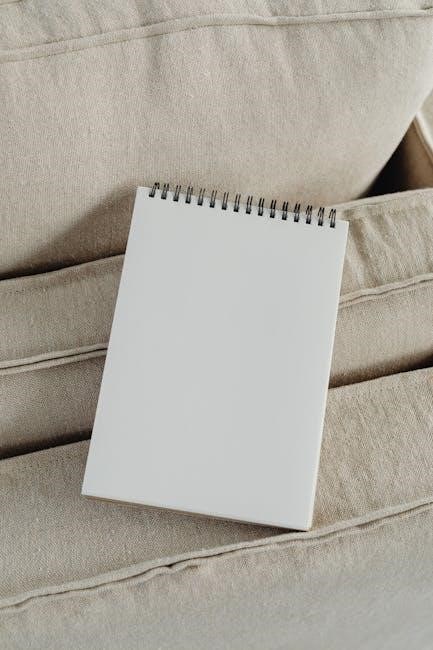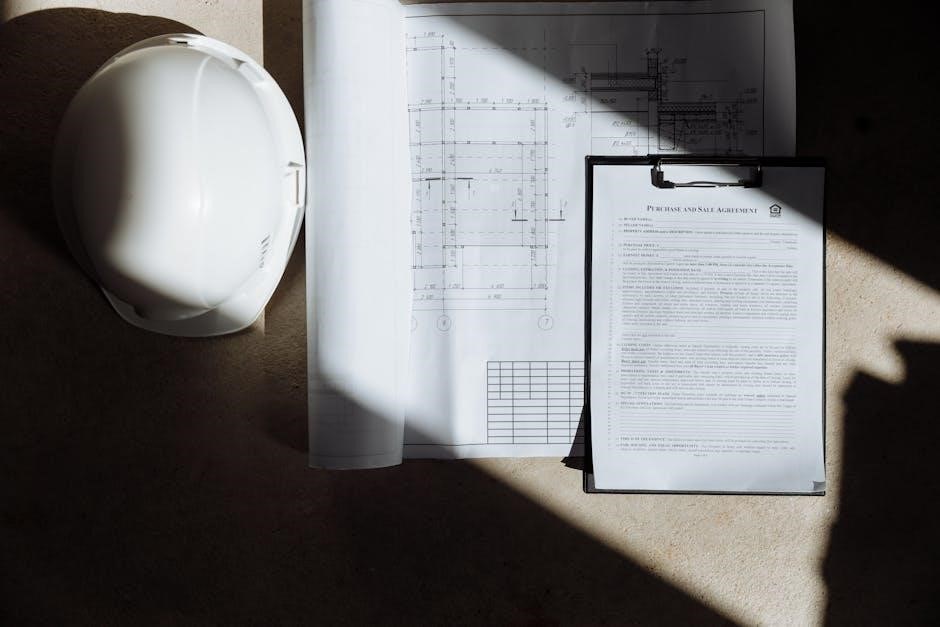Modern Horizons 3 introduces a dynamic and complex draft environment with 10 distinct archetypes, blending powerful interactions and strategic depth․ This set emphasizes deckbuilding synergy and mana efficiency, creating a “Limited Constructed” feel․ Players must adapt to archetype-specific strategies and card prioritization to succeed in this engaging format․
1․1 Overview of the MH3 Set and Its Impact on Draft
Modern Horizons 3 (MH3) is a 255-card set designed specifically for non-rotating formats like Modern and Legacy, but its draft environment stands out as uniquely engaging; Released in June 2024, MH3 introduces a mix of reprints and new cards, creating a draft experience that feels both familiar and innovative․ The set’s draft format emphasizes strategic deckbuilding and synergy, with a focus on 10 core archetypes that define gameplay․ MH3’s design encourages players to adapt to the draft’s flow, prioritizing cards that fit their chosen strategy․ The set also includes powerful artifacts and colorless cards, adding depth to deck construction․ Its impact on draft lies in its ability to balance accessibility for newcomers with complexity for experienced players․
1․2 Key Features of MH3 Draft Environment
The MH3 draft environment is characterized by its strategic depth and complexity, offering a wide range of deckbuilding options․ With 10 distinct archetypes, players can explore various playstyles, from aggressive strategies to controlling and combo-oriented decks․ The set emphasizes card synergy and mana efficiency, rewarding drafters who prioritize cohesive builds․ MH3 also features a mix of powerful commons, impactful uncommons, and game-changing rares, creating a balanced yet dynamic draft experience․ Additionally, the presence of artifacts and colorless cards adds flexibility, allowing for innovative deck constructions․ This environment appeals to both experienced players and newcomers, blending accessibility with depth to ensure engaging and competitive games․ The draft’s design encourages adaptability and strategic thinking, making it a standout format in the MTG universe․

Understanding the Archetypes in MH3 Draft
MH3 Draft features 10 distinct archetypes, including aggressive, midrange, control, and combo strategies․ These archetypes cater to diverse playstyles, offering deep strategic depth and versatile deckbuilding options for drafters․
2․1 Overview of the 10 Basic Archetypes
The 10 basic archetypes in MH3 Draft provide a diverse foundation for deckbuilding․ These include Aggro, Burn, Tokens, Rock, Value Midrange, Counter Magic, Prison, Storm, and Doubling Season Combo․ Each archetype offers unique strategies, requiring specific card synergies and playstyle adjustments․ Aggressive archetypes focus on early-game tempo, while Midrange builds emphasize value trades and card advantage․ Control and Combo decks rely on interaction and setup, respectively․ Understanding these archetypes is crucial for draft success, as they shape card selection and overall strategy․
Players must identify which archetype their pool supports and commit early to maximize consistency․ The interplay between archetypes also influences the draft environment, making adaptability key․ With such variety, MH3 Draft challenges players to master multiple strategies while maintaining flexibility to pivot as needed․
2․2 Aggressive Archetypes (e․g․, Burn, Tokens)
Aggressive archetypes in MH3 Draft, such as Burn and Tokens, focus on quick wins through early-game pressure․ Burn decks prioritize direct damage spells and low-toughness, high-power creatures to reduce opponents’ life totals rapidly․ Tokens decks, meanwhile, aim to swarm the board with numerous small creatures, often amplified by anthems or pump effects․ Both archetypes require strong synergy between creatures and spells to maintain momentum․ Key cards like Guide of Souls and Evolution Witness excel in these strategies․ Aggressive decks thrive when they can curve out effectively, but they often struggle against removal-heavy or midrange decks that can disrupt their tempo․ Proper card selection and sequencing are vital to their success․
2․3 Midrange Archetypes (e․g․, Rock, Value Midrange)
Midrange archetypes in MH3 Draft, such as Rock and Value Midrange, emphasize balanced strategies that combine early-game pressure with long-term value․ Rock decks often feature a mix of removal spells and resilient creatures to disrupt opponents while maintaining board presence․ Value Midrange focuses on card advantage through card draw or token generation, ensuring sustained pressure․ Key cards like Evolution Witness and Dreadbore shine in these decks, providing both offense and defense․ Midrange strategies excel against aggressive decks but can struggle against Control or Combo decks that neutralize their threats․ Properly balancing creature and interaction cards is crucial for success in these archetypes․
2․4 Control Archetypes (e․g․, Counter Magic, Prison)
Control archetypes in MH3 Draft revolve around disruption and card advantage, utilizing counterspells and prison effects to dominate games․ These decks thrive by neutralizing threats and locking opponents out․ Key strategies include early counterspells to disrupt aggressive starts and prison mechanisms to prevent opponents from casting spells․ Control decks often rely on card draw and removal to maintain superiority․ While they can struggle against Combo decks, their ability to control the board makes them formidable in longer games․ Properly timing counterspells and managing resources are critical to success in these archetypes, which reward players who anticipate and adapt to opponents’ moves․

2․5 Combo Archetypes (e․g․, Storm, Doubling Season)
Combo archetypes in MH3 Draft focus on winning through explosive plays rather than incremental advantage․ Decks like Storm and Doubling Season aim to generate overwhelming value quickly․ Storm leverages cheap cantrips and ritual effects to cast multiple spells in a turn, while Doubling Season uses token generation and anthems to flood the board․ These archetypes require precise card selection and synergy to function․ However, they are vulnerable to disruption from Control decks․ Success hinges on fast assembly of combo pieces and protecting the win condition․ Combo decks offer high power potential but demand a deep understanding of timing and opponent interaction․

Draft Strategy and Card Prioritization
Draft strategy in MH3 focuses on card synergy and adaptive deckbuilding․ Prioritize high-impact cards early, adapt to signals, and maintain flexibility to build a cohesive, powerful deck․
3․1 Importance of Card Synergy and Deckbuilding in MH3
In MH3, card synergy and deckbuilding are crucial for success․ The set’s design encourages cohesive archetype builds, where each card amplifies others’ strengths․ Drafters must identify how cards interact and overlap within their chosen archetype to maximize deck effectiveness․ High-impact combinations and engine cards often dictate the power level of a deck․ Understanding these synergies allows players to build more consistently and execute game plans effectively․ Proper deck construction can turn a collection of cards into a competitive force, making it a cornerstone of MH3 draft strategy․
3․2 Card Selection and Prioritization in the Draft
In MH3, card selection and prioritization are pivotal for drafting success․ Early picks should focus on high-impact cards and archetype-defining pieces․ As the draft progresses, prioritize cards that synergize with your existing pool, ensuring a cohesive game plan․ Versatile cards with multiple uses are highly valuable, as they provide flexibility in deckbuilding․ Conversely, avoid cards that don’t fit your strategy or require specific setups․ The draft’s competitive nature demands balancing immediate power with long-term deck potential․ By focusing on quality over quantity and adapting to signals, you can build a competitive and fun deck that leverages the set’s unique strengths․
3․3 Role of Fixing and Mana Requirements
Mana fixing is a critical aspect of MH3 draft, as the set features complex mana requirements and multicolor strategies․ Cards like artifact creatures and colorless fixes play a vital role in ensuring smooth mana development․ The set’s design emphasizes tight mana curves, making it essential to balance low-to-the-ground threats with high-impact spells․ Players must prioritize cards that provide mana consistency while aligning with their archetype․ Neglecting mana requirements can lead to inefficient gameplay, while incorporating the right fixes ensures optimal deck performance․ This balance is key to success in MH3 draft, where mana efficiency often dictates the flow of the game․
3․4 Signaling and Adaptation During the Draft
Signaling and adaptation are crucial in MH3 draft, as players must respond to the drafting cues of others․ Paying attention to the cards passed to you and those you pass can reveal opponent archetypes and guide your strategy․ Adaptation is key, as the draft’s progression may require shifting your initial plan based on available cards․ Recognizing when an archetype is open or being cut allows you to pivot effectively․ This dynamic process ensures you maximize synergy in your deck․ Staying flexible and observant is essential to capitalizing on opportunities and avoiding conflicts in this competitive environment․
3․5 Common Pitfalls and Mistakes to Avoid
Avoid common mistakes like forcing an archetype too early or ignoring mana curve balance․ Many players overvalue high-impact cards without considering syntax and synergy․ Neglecting to adapt to the draft’s signals can lead to conflicts with other players’ strategies․ Overdrafting similar effects without proper support is another pitfall․ Additionally, undervaluing fixing or dismissing colorless/utility cards can weaken your deck․ Lastly, avoid stubbornly sticking to a plan when the draft direction shifts․ Recognizing these errors and adjusting your approach will significantly improve your chances of success in MH3 draft․

Key Cards and Power Picks in MH3 Draft
Modern Horizons 3 is packed with powerful cards that define the draft experience․ Top commons, high-impact uncommons, and must-have rares shape deck strategies, while artifacts and colorless cards provide versatility and strength․

4․1 Top Commons in MH3 Draft
The top commons in MH3 Draft are crucial for building competitive decks․ Cards like Aerial Guide and Guide of Souls provide early-game momentum and synergize well with popular archetypes․ These commons often define the power level of the format, offering versatile effects that support both aggressive and midrange strategies․ They are highly draftable and frequently appear in top-performing decks․ While not as flashy as rares, these commons are consistent enablers of key strategies, making them indispensable in the draft environment․ Understanding their value is essential for card prioritization and building a cohesive deck․ Their availability ensures they remain cornerstones of competitive play in MH3 Draft․
4․2 High-Impact Uncommons
High-impact uncommons in MH3 Draft are game-changers that bridge the gap between commons and rares․ Cards like Evolution Witness and Artificer’s Familiar provide critical utility and synergy for their respective archetypes․ These uncommons often enable key strategies, such as ramping into larger spells or generating card advantage․ Their moderate rarity makes them more accessible than rares while still offering significant power․ Players should prioritize these uncommons when they align with their deck’s archetype and mana curve․ They are often the backbone of competitive decks, offering reliable performance and versatility across multiple matchups․ Identifying and securing these high-impact uncommons early in the draft is crucial for success in MH3․
4․3 Must-Have Rares and Mythic Rares
Rares and mythic rares in MH3 Draft are elite cards that can single-handedly swing games․ Cards like Guide of Souls and Aerial Guide offer unmatched power and versatility, making them highly sought after․ These cards often serve as win conditions or game-changing threats, providing significant advantages over opponents․ Rares like Evolution Witness enable key synergies, while mythic rares such as Thrummingbird deliver unparalleled value․ Prioritizing these cards is critical, as they often define the strength of a deck․ However, their rarity means they’re less frequent, so securing them early in the draft is vital․ These cards are the cornerstones of competitive MH3 Draft decks․
4․4 Role of Artifacts and Colorless Cards
Artifacts and colorless cards in MH3 Draft play a unique role by offering versatility and flexibility across decks․ These cards often provide universal effects or mana-fixing, making them valuable in any archetype․ For example, artifacts like Aerial Guide or Thrummingbird can accelerate mana or enhance strategies․ Colorless cards, such as Guide of Souls, act as powerful threats or enablers for combo decks․ Their ability to fit into multiple builds makes them highly desirable picks․ Additionally, artifacts often serve as key enablers for strategies like affinity or articifact-based synergies․ Securing these cards early can significantly strengthen a deck’s overall performance, especially in a format where mana efficiency and versatility are crucial․
![]()
Color Combinations and Synergies
MH3 Draft thrives on color combinations, with two-color synergies being most common․ Each pairing offers unique advantages, such as powerful interactions or flexibility․ Balancing these choices is key to success․
5․1 Mono-Color Strategies
Mono-color strategies in MH3 Draft offer focused gameplay by leveraging a single color’s strengths․ Each color boasts unique identities, such as aggressive creatures in red or big mana plays in green․ While mono-color decks can be powerful, they require careful card selection to maintain consistency․ Fixing mana is less of a concern, allowing players to maximize synergy within their chosen color․ However, mono-color builds often lack flexibility and can be vulnerable to specific strategies․ Players must weigh the benefits of specialization against potential drawbacks like limited removal or interaction․ Despite these challenges, mono-color decks remain a viable and rewarding choice for drafters who master their chosen color’s strengths and adapt to the metagame․
5․2 Two-Color Synergies
Two-color synergies in MH3 Draft allow for greater flexibility and access to a wider range of cards․ By combining two colors, players can leverage complementary strengths, such as aggressive creatures from red paired with white’s removal or lifegain․ Color pairs like Boros (red-white) excel at fast starts and token generation, while Golgari (green-black) focuses on value engines and card advantage․ Two-color decks often benefit from powerful interaction between colors, enabling strong tempo plays or mid-game dominance․ However, balancing mana requirements and avoiding weak links in the curve is crucial․ Proper signaling during the draft ensures a cohesive strategy, making two-color synergies a versatile and rewarding approach for drafters who adapt effectively․
5․3 Three-Color and Four-Color Possibilities
While two-color decks are more common, MH3 Draft also supports three-color and four-color strategies for ambitious players․ These builds leverage powerful interactions across multiple color synergies, such as combining aggressive creatures, removal, and card draw․ However, they require excellent mana fixing and careful deck construction to maintain consistency․ Three-color decks can offer greater flexibility and access to high-impact cards, but they risk being too reliant on specific enablers․ Four-color builds are even rarer and often hinge on exceptional fixing or unique synergies․ While these decks can be rewarding, they are harder to draft consistently and are best attempted by experienced players familiar with the set’s dynamics․

Draft Environment and Playability
The MH3 Draft environment offers a dynamic and strategic experience, blending powerful plays with interactive gameplay․ Decks exhibit a constructed-level playability, resulting in engaging and unpredictable matches․
6․1 The “Limited Constructed” Nature of MH3 Draft
Modern Horizons 3 Draft embodies the concept of “Limited Constructed,” where decks feel akin to pre-built, high-power constructed decks․ This format combines the excitement of drafting with the strategic depth of constructed play, offering a unique experience․ Cards in MH3 are designed to synergize effectively, enabling players to craft cohesive strategies reminiscent of decks built for competitive play․ The set’s focus on archetype-specific cards and powerful interactions creates a dynamic and engaging draft environment․ This “Limited Constructed” nature ensures that games are both strategic and unpredictable, rewarding players for their ability to adapt and execute their chosen archetype effectively․
6․2 Common Strategies and Deck Archetypes
Modern Horizons 3 Draft features a wide array of deck archetypes, each with unique strategies and playstyles․ Aggressive decks like Burn and Tokens focus on quick wins, while Rock and Value Midrange emphasize resilience and card advantage․ Control and Prison strategies leverage powerful counter-magic and lockdown effects to dominate games․ Additionally, Storm and Doubling Season combo decks offer high-risk, high-reward opportunities․ These archetypes are well-supported by the set’s design, making it crucial for drafters to identify and commit to a strategy early․ The diversity of these strategies ensures that MH3 Draft remains dynamic and engaging, with matchups often hinging on adaptability and execution․
6․3 Playability and Feel of MH3 Draft Decks
MH3 Draft decks are characterized by their smooth gameplay and coherent strategies, often resembling pre-constructed decks․ The set’s design ensures that each archetype feels polished and interactive, with cards synergizing effectively․ Aggressive decks deliver fast-paced action, while Midrange and Control decks offer strategic depth․ Combo decks provide high-skill-ceiling moments, rewarding precise play․ Overall, MH3 Draft decks are fun and engaging, with games often decided by key decisions rather than randomness․ This balance of power and playability makes the format enjoyable for both casual and competitive players, ensuring a rewarding experience regardless of the archetype chosen․

Sideboarding and Mulligan Strategies
Sideboarding in MH3 Draft is about optimizing for specific matchups, while mulligans help find strong opening hands․ Adaptability is key to maintaining a competitive edge and ensuring card advantage․
7․1 Importance of Sideboarding in MH3 Draft
Sideboarding in MH3 Draft is crucial for refining your strategy against specific opponents․ By adapting your deck post-board, you can address weaknesses and exploit matchups more effectively․ Cards like counterspells or removal become vital in certain situations, while others may become less relevant․ Understanding the meta and common archetypes helps prioritize sideboard cards․ A well-timed swap can shift the game’s momentum, ensuring you maintain a competitive edge․ Proper sideboarding requires anticipating opponent’s moves and adjusting your deck accordingly, making it a key skill for success in MH3 Draft․ It allows players to optimize their deck for specific threats, enhancing overall gameplay efficiency and effectiveness․
7․2 Mulliganing in the Draft Environment
Mulliganing is a critical strategic decision in MH3 Draft, allowing players to restart the game with a new hand․ Knowing when to mulligan is vital, as it directly impacts your chances of winning․ A good starting hand should provide early game stability, relevant spells, and mana consistency․ In Draft, where matchups are unpredictable, mulliganing to a hand with versatile cards can make a significant difference․ Avoid keeping hands with insufficient mana sources or overly expensive spells․ The decision to mulligan should be based on the draft’s specifics, such as the archetype you’re playing and the expected opponent’s strategy․ A well-timed mulligan can set you up for success, ensuring you start the game in a favorable position․
Mastering MH3 Draft requires focusing on archetype synergy and card prioritization․ Adapt to signals and avoid common pitfalls․ Bryan’s guide offers expert insights for refining your strategy and exceling in the format․
8․1 Summary of Key Points
Modern Horizons 3 Draft offers a complex and engaging experience with 10 distinct archetypes, emphasizing card synergy and strategic deckbuilding․ The set’s design creates a “Limited Constructed” feel, requiring players to adapt to archetype-specific strategies and mana efficiency․ Key to success is understanding card prioritization, signals, and avoiding common pitfalls like overcommitting to multiple archetypes․ Bryan’s guide provides valuable insights into refining your approach, while the format’s depth ensures replayability and challenge․ By focusing on these elements, players can master the MH3 Draft environment and improve their overall performance in this dynamic format․
8․2 Final Tips for Success in MH3 Draft
To excel in MH3 Draft, focus on understanding the format’s depth and adapting to its dynamic nature․ Prioritize archetype consistency and card synergy while drafting, as these are key to building a cohesive deck․ Pay attention to signals from other players to refine your strategy․ Mulligan aggressively for early-game stability and avoid overcommitting to multiple archetypes․ Practice deckbuilding fundamentals, such as mana curve optimization, and familiarize yourself with high-impact cards․ Stay flexible during games and adapt to board states․ Finally, learn from each draft to refine your approach and improve your overall performance in this engaging format․

Additional Resources and Guides
Explore Bryan’s Ultimate Draft Guide for archetype breakdowns and card ratings․ Check out community forums and expert articles for deeper insights and drafting strategies․
9․1 Recommended Draft Guides and Articles
For mastering the MH3 draft format, Bryan’s Ultimate Draft Guide is highly recommended, offering detailed archetype breakdowns and key card rankings․ Additionally, resources like Modern Horizons 3 Draft Guide provide in-depth insights into color tier lists, set mechanics, and strategic tips․ Articles from experienced players and community forums share expert opinions and real-world drafting experiences․ These guides are essential for understanding the nuances of the format and improving your drafting skills․ They cover everything from common pitfalls to advanced strategies, ensuring you’re well-prepared for your next draft․
9․2 Community Resources and Expert Opinions
The MTG community offers a wealth of resources for MH3 draft players․ Forums like Reddit’s r/mtg and MTGGoldfish feature detailed discussions and expert analyses․ Streamers and YouTubers share draft gameplay and strategies, while podcasts like The Draft Lab provide audio insights․ Many top players publish their draft experiences, offering unique perspectives․ These community-driven resources complement official guides, helping players refine their skills․ Engaging with the community enhances understanding of the format and fosters improvement through shared knowledge and experiences․